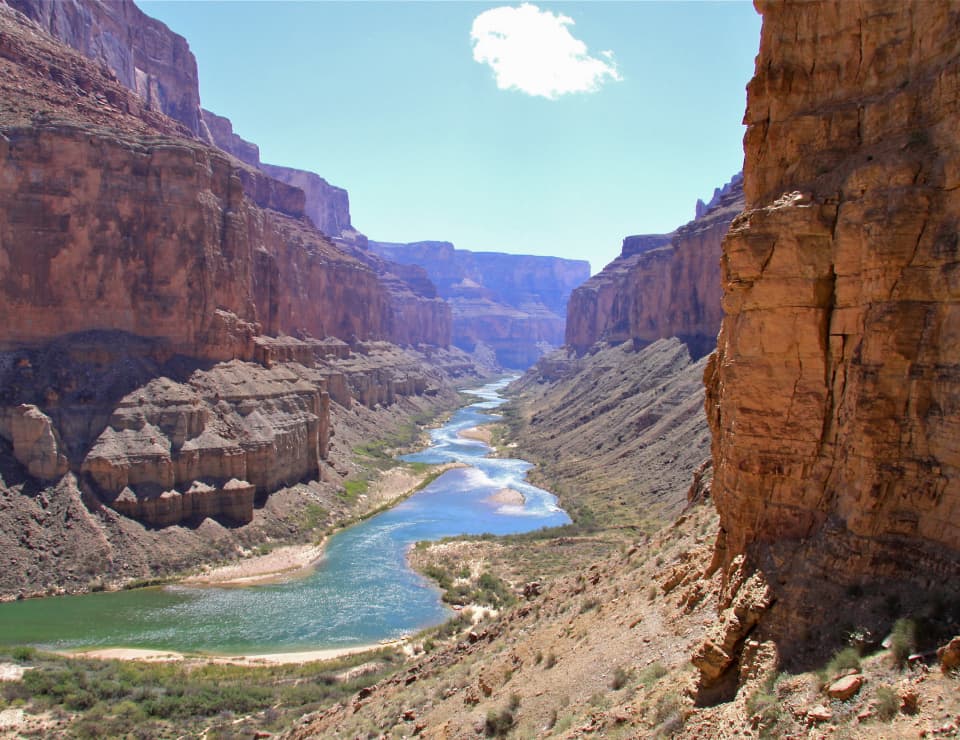Book Mobile Pet Grooming Las Vegas, NV Grand Canyon National Park

Grand Canyon National Park is a stunning destination with breathtaking views, diverse wildlife, and rich history. It's also a pet-friendly place that welcomes dogs and cats of all shapes and sizes. Whether you want to hike, camp, or enjoy the scenery, you and your pet will have a blast at the Grand Canyon.

History
The first humans to inhabit the area were Paleo-Indians, who arrived about 12,000 years ago. They were followed by various Native American tribes, such as the Ancestral Puebloans, the Cohonina, the Paiute, the Hopi, the Havasupai, the Hualapai, and the Navajo. These tribes developed cultures and traditions influenced by the canyon's environment and resources. They also left artifacts, petroglyphs, pictographs, and dwellings that can still be seen today.
The Grand Canyon became a national monument in 1908, thanks to President Theodore Roosevelt's efforts to protect it from mining and development. It was designated as a national park in 1919, becoming one of the first national parks in the United States. Since then, it has attracted millions of visitors worldwide who admire its beauty and diversity.
The Grand Canyon with Pets
Pets are allowed on
The South Rim: This is the most popular and accessible part of the park, where you can find many facilities, services, and attractions. Pets are allowed on all trails above the rim, on the shuttle buses, in the campgrounds, and in some lodges.
The North Rim: This is the less crowded and more remote part of the park, where you can enjoy a quieter and more scenic experience. Pets are allowed on all trails above the rim, in the campgrounds, and in some lodges.
The Desert View Drive: This scenic road runs along the eastern edge of the South Rim, offering spectacular views of the canyon and the river. Pets are allowed in all viewpoints and picnic areas along this drive.

Pets are allowed on
Any trails below the rim include the famous Bright Angel Trail and South Kaibab Trail, which lead to the bottom of the canyon. These trails are steep, narrow, and exposed to extreme temperatures and hazards. They are not suitable for pets or inexperienced hikers.
The Inner Canyon: This area below the rim encompasses the river corridor and the Phantom Ranch. This area is only accessible by hiking, mule riding, or rafting. It requires a permit and a reservation in advance. Pets are not permitted in this area for their safety and to protect the natural resources.
The Skywalk: This glass bridge extends over the canyon's edge at the West Rim. It offers a thrilling view of the canyon floor 4,000 feet below. Pets are not allowed at this attraction for safety reasons.
Flora & Fauna

Taking Care of Your Dog
Dogs are only allowed on trails above the rim, on paved roads and walkways, in developed areas, and in designated campgrounds. They are not permitted on trails below the rim, on shuttle buses, in park lodges or buildings (except for service animals), or in wilderness areas.
Dogs must always be leashed and must be supervised. The leash must be six feet long and attached to a collar or harness. You must control your dog and avoid barking or disturbing other visitors or wildlife.
Dogs must have current vaccinations and tags. You must carry proof of rabies vaccination with you at all times. You must also have a pet health certificate if traveling from another state or country.
Dogs must be well-behaved and socialized. You must avoid bringing aggressive or anxious dogs to the park, as they might pose a risk to themselves or others. You must also be prepared to deal with any emergencies or injuries that might occur during your trip.
Dogs must be cleaned up after. You must carry plastic bags and dispose of your dog's waste in trash cans or dumpsters. You must not bury or leave your dog's waste on the ground or in vegetation.
Taking Care of Your Cat

Interesting Facts
The Grand Canyon is about 277 miles long, up to 18 miles wide, and over a mile deep.
The Grand Canyon was formed by the erosion of the Colorado River over millions of years.
The Grand Canyon is one of the Seven World's Natural Wonders and a UNESCO World Heritage Site.
The Grand Canyon has five life zones: desert, riparian, woodland, forest, and alpine.
The Grand Canyon has more than 4.5 million visitors every year.
Praise from our satisfied customers:
Have a question or need help with an appointment?
Drop us a message and we will get back with you about any questions or comments you have about an existing appointment.